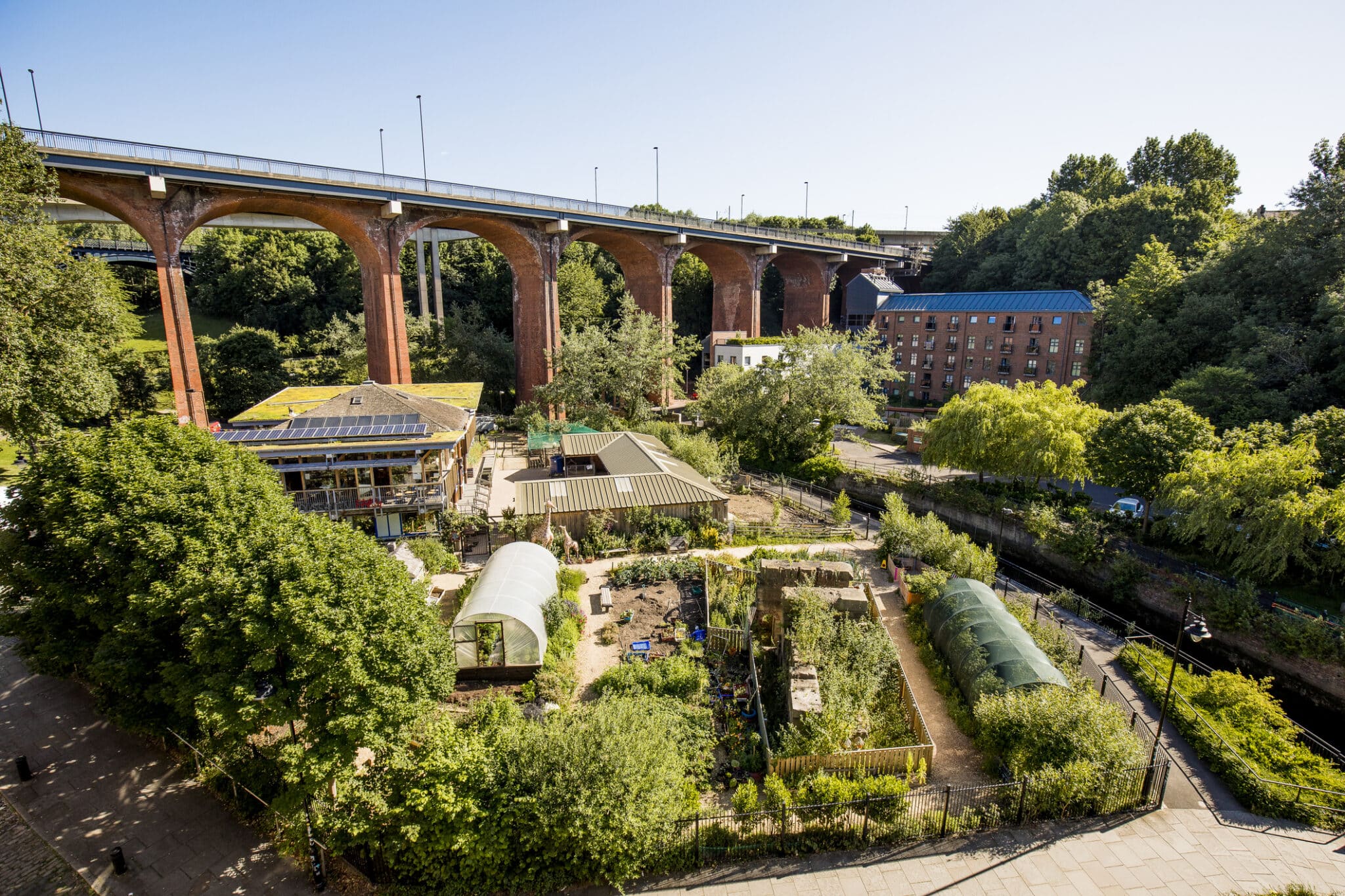City Blooming - An Overview
City Blooming - An Overview
Blog Article
Unknown Facts About City Blooming
Table of ContentsOur City Blooming DiariesOur City Blooming Statements7 Easy Facts About City Blooming DescribedExcitement About City BloomingOur City Blooming PDFs
:max_bytes(150000):strip_icc()/womanonrooftopurbangarden-7fffbb3897ac48f390d94b9545d4d082.jpg)
As you walk the roads of the Bronx, Southside Chicago or East Oakland, you might see have also seen large plots of ripening fruits and veggies being collected. What specifically are metropolitan ranches and community yards? Are they different? If so, how? And extra significantly, exactly how can you sustain them? Urban farming, city farming, or city gardening is the practice of growing, processing and dispersing food in or around city areas.
Typically, metropolitan farming as a technique is a bigger investment than gardening. There are countless extra hours invested into the trivial matters of farming, from the crop plan to the tending of your beds. This moment commitment tackles a whole new significance once you understand the goal that is being functioned in the direction of and devoted, specifically that of obtaining a plentiful return of plants to be consumed.
A community yard is a single parcel gardened collectively by a group of individuals. Neighborhood yards utilize either individual or shared stories on personal or public land while producing fruit, veggies, and/or plants grown for their attractive appearance. The basic design below is that a huge team of people each add a relatively percentage of time to functioning their very own story, and obtain the fruits of their labor consequently.
The Only Guide for City Blooming

, and neighborhood companies by assisting them create and grow their very own gardens. The distinctions in between community garden and urban ranch are nuanced, though in the end the exact same fundamental task takes placefood plant growing but within different organizational frameworks - City gardening.
Urban farms are usually more company and technology oriented, with the primary objective of optimizing returns and selling produce. Industrial city ranches are frequently targeted at increasing manufacturing on usually small land location with technologies in modern technologies such as aquaculture, hydroponics, and greenhouses and might partner with a business kitchen area to produce locally-produced value-added items such as jams and sauces.
A Biased View of City Blooming
The produce is typically expanded on a much smaller sized range and is taken home to consume at home or to share. By providing much needed green areas in penniless, concrete metropolitan locations, they permit the benefits of yard gardening to those doing not have backyards, and serve as superb examples of self-organization and area advocacy.
Some neighborhood yards, often in metropolitan areas, move into expanding for commercial usage while some metropolitan ranches open up their land for more socially mindful benefits. No matter of just how you define and separate the two, they are both positive pressures for good in cities around America and the world.
As all of Small Axe Peppers' hot sauces are sourced with peppers from neighborhood yards, your purchases directly aid money these neighborhood projects (https://clean-gondola-5c7.notion.site/City-Gardening-Transforming-Urban-Spaces-7213d2fdc6c341e8bd8975e4c2f79126?pvs=4). So, participate in the transformation by.
A pal of mine recently commented in a discussion regarding gardening that "It's intriguing, I've constantly thought that farming as a technique is rather like gardening. As I invested more and even more time in my Urban Agriculture course I've come to recognize that to say that gardening is a miniature extension of farming would be a little bit of stretch.
The Single Strategy To Use For City Blooming
They both rotate around the treatment of plants for some goal that can be sustenance, profit or simply the enjoyment of the craft. They both need a financial financial investment on top of a time financial investment, something that a whole lot of people in our fast paced life do not have a whole lot of.
We can see that the similarities are abundant, yet are the differences enough to create a difference? As a student at NYU I have the possibility to collaborate with the leave It Better Foundation, a team that shows fundamental nourishment and gardening to senior high school students. https://www.gaiaonline.com/profiles/cityblooming/46731693/. This experience gave me an extensive venture right into the globe of amateur horticulture beyond what lots of people have been in call with
Farming as a method is a larger investment than horticulture. There are many extra hours spent right into the minutiae of farming, from the crop strategy to the often tending of your beds.
The ordinary gardener sets about his tasks as a job instead of a necessity and therefore distinguishes his or herself from the farmer. Nevertheless with this difference in hand, they are both soothing and enjoyable exercises that anybody can get, which on its own must be an ad for you can try this out both.
Not known Factual Statements About City Blooming
Something failed - sustainable gardening. Wait a moment and attempt once more Try once again
Report this page